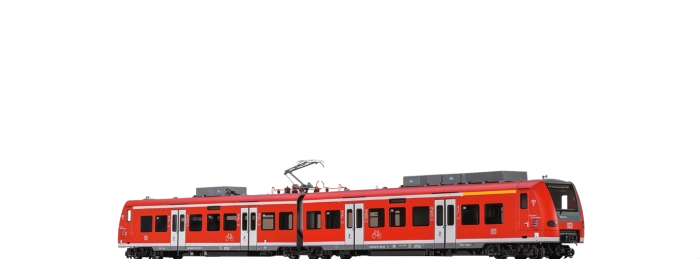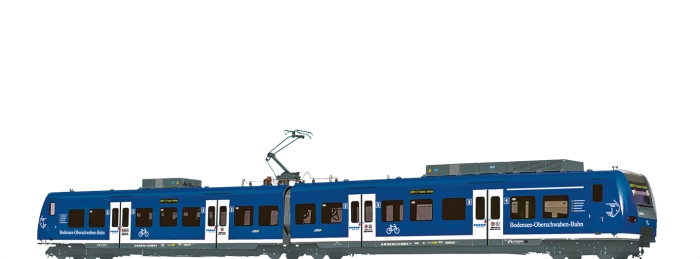
Electric Railcar BR 425 "DB Regio NRW" DB AG (Aachen Hbf)
Road no.: 94 80 425 059-3
Model details
- Perfectly replicated three-dimensional front
- Extra mounted air conditioning installation and high voltage equipment
- Finely detailed pantograph
- Fine engravings
- In-plane assembled windows
- Functional and illuminated destination indicator
- LED lighting
- Precise replica of the bogies, incl. consideration of all frame differences for the Electric Railcars BR 425 and BR 426
- Windscreen wipers individually mounted
- Destination indicator at the font sides behind the pane
- True-to-original rest position of the pantographs
- Prepared for sound or with built-in sound
- With interior lighting
- Optimal power input
- NEM-standard short-coupling, for double taction
- Interior fittings
- Pick-up shoe switched by driving direction
Overview of technical functions
| Driving function | |||
| Light change | |||
| Tail lights separately switchable | |||
| Driver cabin lighting | |||
| Passenger cabin lighting | |||
| Shunting lights | |||
| Long-distance headlights | |||
| Destination indicator | |||
| Light setting programmable for analogue operation | |||
| Digital interface | PluX22 | PluX22 | PluX22 |
| Decoder | |||
| Sound | |||
| Additional information |
|
| |
Info about the original
For use in regional traffic, DB AG procured numerous new vehicles that were primarily designed as railcars at the end of the 1990s. Consequently, 249 units of a four-part electric railcar which was given the BR 425 designation were also procured from the Siemens/ Adtranz/ Bombardier/ DWA consortium between 1999 and 2008. An identical two-part version for less-frequented routes was also created and given the BR 426 designation. The car bodies are manufactured from aluminum extruded profiles and the windows are bonded flush. The car bodies support each other via Jacobs bogies and the end bogies are respectively driven by two three phase engines. The wagon is fully accessible from the inside and has room for 206 seated and 228 standing passengers. The wagon also boasts 30 folding seats with a further 24 normal seats in the first class cabin. The 425 was and continues to be utilized by DB Regio NRW; Baden-Württemberg; Südwest; Bayern; Südost; Nord; Schleswig-Holstein and Berlin; no private railway companies procured these railcars. Tasks entrusted to this railcar included service in various suburban rail networks such as those in the Ludwigshafen – Mannheim – Heidelberg area of the Rhine-Neckar transport association as well as an RE service on long-distance routes. This includes routes such as Mannheim – Saarbrücken – Trier or Magdeburg – Stendal – Wittenberge – Salzwedel.



